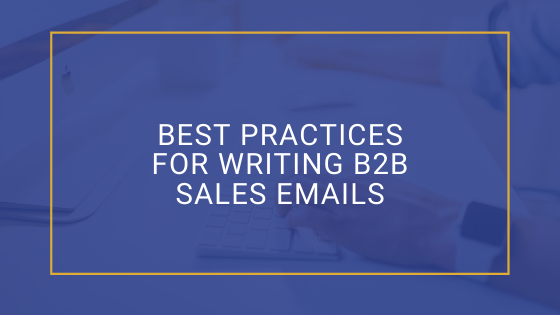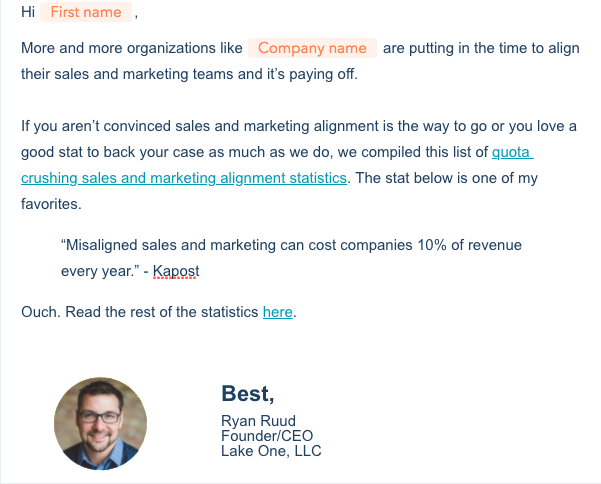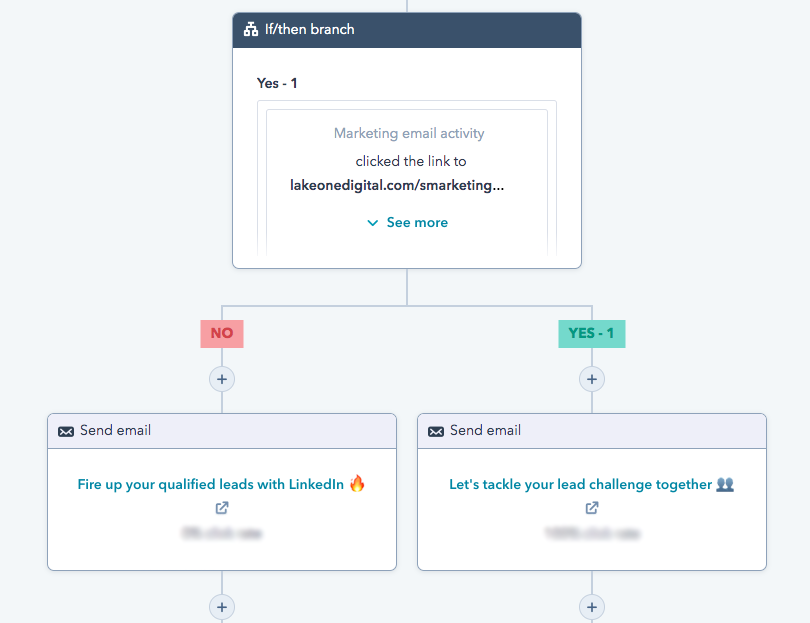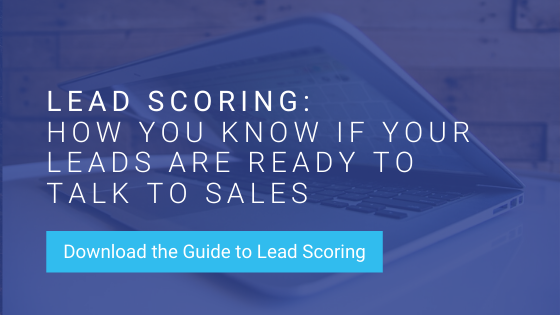Writing B2B sales emails is one part art, one part science, and a whole lot of patience. To get to that elusive, perfect email you have to find the blend between friendly but not over-eager, helpful but not pushy, and naturally follow up without being annoying.
Here are our experience-based best practices based on writing a B2B sales email.

1) Know Your Persona
A persona is a semi-fictional representation of your ideal buyer according to HubSpot. Almost everything you do in sales and marketing should start with your persona, and sales emails are no different. When writing a B2B sales email, consider how technical your persona is. While you know and care about how important your product is, your email recipient may not. The CTO or head of the IT department might show interest in the highly technical aspects of your product, but you might not get the CMO to read beyond line two if you start talking about phalanges and gigahertz.
Figure out who you’re addressing and build your strategy around how to solve their pains and problems with your product using their language.
You’re generating leads, but are they ready to talk to you? Get the guide to lead scoring and learn how to determine if your leads are sales-ready.
2) Be Helpful, Not Sales-y
Which brings me to number two- be helpful. Where impulse can lead a B2C purchase, the majority of B2B searches and buying journeys are set off by a pain point. The need to improve, prevent, encourage, scale, etc. in order to do better business. We know that those B2B buyers are eager for information and resources because 92% of B2B purchases start with search.
Use that to your advantage when you write your B2B sales emails. By knowing your persona, you should have been able to uncover the pain points they experience. By knowing your product, you should be able to relay how your product solves those pains. The key, though, is providing the content, resources, and insights to do so without giving off the used car salesman vibe. If you set out to be authentic and your intent is to be helpful (rather than desperate for a sale), you may find your emails naturally follow in tone.
3) Offer Content and Resources
If your sales and marketing teams are aligned, fingers crossed, you have assets to include in your sales emails that provide value. In the spirit of being helpful and not sales-y, the assets I’m talking about are not about you. Yup. You heard me right. Drag all of those sales brochure PDFs on your desktop to a new folder called “for later” and bear with me.

B2B buyers want information. They set out to gain as much knowledge as possible, map out all their options, and typically present select solutions to their teams for final buy-in: the buyer’s journey. This all starts with knowledge. Your job is to provide that to them, via resources, to make their research process easier. As you move to conclude your follow-up process, you can include those product-specific brochures and sell sheets.
4) Create Personalization and Authenticity
Personalization in a B2B email can improve click-through rate by as much as 14% and conversion rates by 10%. It’s important to know that personalization is more than just a name. It’s mentioning a connection, noting something in common, building a bit of rapport. Doing so builds trust, authenticity, and credibility.
Here are some ways to create personalization in your emails:
- Company name
- Noting mutual connections
- Remembering and excluding information/resources they already found on their own
- Tailoring content to the specific persona’s needs
- Including personalization tokens in the subject line
- Sending by timezone
- Acknowledging seasonality
Your goal here is to identify yourself as a real human (even if you’re sending automated emails) and create a connection.
5) Add a CTA
A CTA, or call-to-action, is a way to encourage your recipient to take a specific next step. Adding one to your email can be in the form of a button or simply in hyperlinked text, but including one is a must. Do not, however, go overboard in the ‘helpful’ department here. Try to limit the actions you’re requesting to one thing – two tops.
You can, however, include the same CTA more than once in the same email. Having only one requested action, potentially reiterated, keeps the focus where you want it to be in order to increase your conversion rates.

6) Include a Thoughtful Subject Line
The biggest factor in whether an email gets opened or not is the subject line. There are some fantastic recommendations for creating engaging subject lines here. In short, don’t make it about you: make it about them. Find a way to include personalization tokens, like name or company, or even pull out some of those even more personal touches if you’re mentioning them in your email.
Most importantly, be sure to test. If you’re using a CRM like HubSpot, it’s easy to run A/B tests on subject lines. (More on that here.) If you aren’t using a CRM, create a simple spreadsheet and run your own tests. Record what’s working and what’s not, and continually build on your success.
7) Create Templates
Creating templates for your B2B sales emails will save you time. A lot of time. And also a lot of energy and brainpower. Imagine being able to copy and paste rather than writing fresh emails multiple times a day. Doing so can help eliminate errors and typos as well.
Additionally, having templates aids in your ability to track and monitor your success rates. Does name dropping a mutual connection work better than asking for just thirty minutes of their time immediately? (I’m guessing it might). The tests you can run are endless, but you won’t be able to effectively measure what’s the most successful if you start from scratch every single time.
Another benefit to templates is that you can use them for multiple people in your organization. If you do run those tests and find something to be highly effective, you can then get everybody into that sweet spot of selling. This also creates brand cohesion, a collective strategy, and a unified voice within your department.
8) Follow up
How many times do you follow up with your sales prospects currently? Once? Twice? Maybe three times? What if I said five times the charm? According to HubSpot, 80% of sales require five follow-ups. Starting to see how important those templates are now?
You can read more about follow up strategies here, but the most important part I want to highlight is that you are following up. And that you’re doing it more than once.
Related reading: 3 Lead follow up processes that will turn off your inbound leads
9) Use a CRM
Using a CRM, like HubSpot, will make your life 1,000 times easier. If you use a CRM to create your CTAs, you can track them and A/B test them easily. The same is also true for your templates and your subject lines. These little time-savers add up quickly to allow you to work more efficiently.
A CRM will also give you the ability to automate your email sends and follow-ups using those templates we just talked about. Once an email is sent, you can designate follow-ups to occur based on timing, user actions, or even user inactions. Doing so increases your win rates and reduces your workload. Find out if the HubSpot CRM is right for you here.

Even if you’re not testing or automating your emails, a CRM is still beneficial because it helps you keep track of your contacts and interactions. You can assign contacts to a company, easily monitor when or if you follow-ups with somebody, and categorize your efforts into deal stages such as won, lost, bad timing, etc. to keep your efforts organized.

Writing B2B sales emails really boils down to one thing: providing value. The meat of your email should be helpful, specific to your persona, and direct focus to one particular call-to-action. Your subject line should be catchy and your content personalized. Using a CRM aids in tracking and creates efficiencies, such as automation, that will generate more success.

